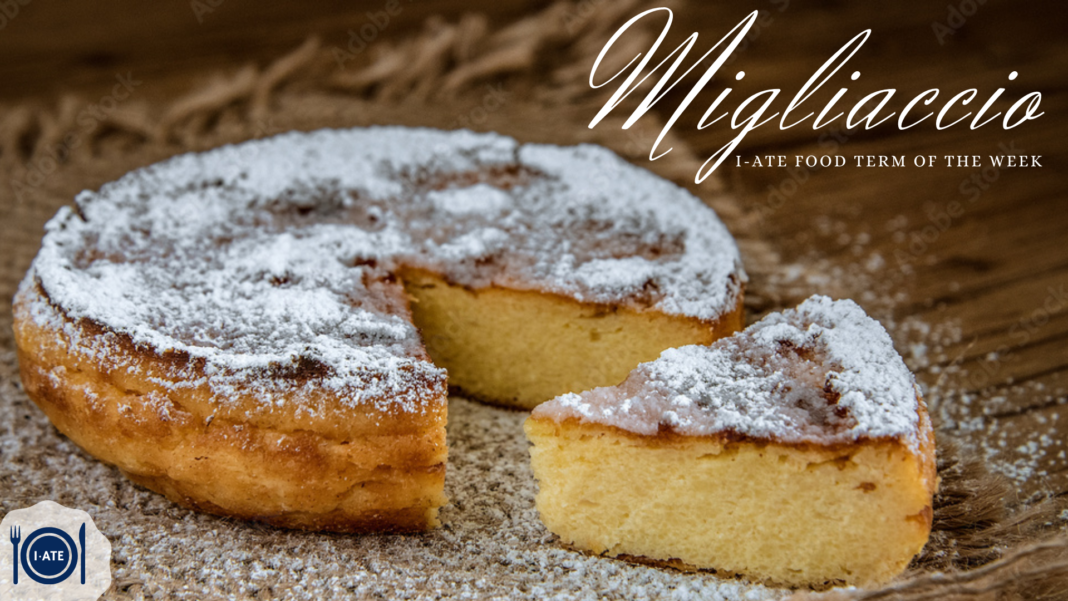Carnival in Italy is that period of the year during which sweet dishes, such as chiacchiere and sanguinaccio, bring people from all around the country together. Differently from these nationally renowned specialities, there are less known traditional desserts like the so-called migliaccio napoletano, a semolina and ricotta cheese cake typical of Campania, a region in the South of the country. While the word napoletano indicates the place of origin of this food, traditionally associated to the city of Naples, migliaccio comes from the Latin word miliaccium, which refers to the traditional bread made of millet, whose cultivation was widespread in Campania.
In the past, millet flour was often used by poor people for cooking and preparing sweets, which is why it is believed that migliaccio was invented by a peasant in the Middle Ages, around the year 1000.

This hypothesis is corroborated by the fact that the original recipe of migliaccio included pig’s blood, a common ingredient of poor people’s recipes, especially in the past, thanks to its high nutritional value. However, the use of blood for this sweet, usually prepared in the Carnival period, was harshly criticised and forbidden by the Church, which associated such a practice with pagan traditions.
After a long time, the recipe was changed, the millet was replaced by durum wheat flour, or semolina, its main ingredient today, and in the late 18th century the blood was replaced by sugar, milk and eggs.
Migliaccio today is a soft cake baked in the oven that, according to the popular Italian cooking website Giallozafferano, is prepared with semolina, milk, water, butter, ricotta cheese, eggs, sugar, and vanilla and citrus flavourings.

Nevertheless, there is no official recipe for migliaccio; it is the result of a long tradition and its preparation may vary in many ways. For example, vanilla and citrus can be replaced or accompanied by other flavourings, like cinnamon or wildflower. Additional ingredients, such as candied fruit or chocolate, can also be used in the cake preparation.
A further variation of migliaccio is its salty version, which is filled with salami, ham and cheese. Despite all these variations however, the traditional sweet version of migliaccio remains the most popular one with Neapolitan people.
Migliaccio is often linked to the Neapolitan pastiera due to the presence of many common ingredients such as ricotta cheese, milk, cinnamon, and wildflower flavourings. However, while pastiera is mainly prepared during Easter time, migliaccio is typically eaten before Lent as a symbol of Carnival. When in Naples, do not miss the opportunity to taste a slice of homemade migliaccio!
References:
Terminology Coordination Unit. 2022. I-ATE Food Term of the Week: Chiacchiere. [ONLINE] Available at: https://termcoord.eu/2021/02/i-ate-term-of-the-week-chiacchiere/.. [Accessed 04 March 2022].
Neapolitan migliaccio: a traditional Carnival dessert from Campania | visitnaples.eu. [ONLINE] Available at: https://www.visitnaples.eu/en/neapolitanity/flavours-of-naples/neapolitan-migliaccio-a-traditional-carnival-dessert-from-campania. [Accessed 04 March 2022].
Ricette di cucina – Le Ricette di GialloZafferano.it. 2022. Ricetta Migliaccio – La Ricetta di GialloZafferano. [ONLINE] Available at: https://ricette.giallozafferano.it/Migliaccio.html. [Accessed 04 March 2022].
Terminology Coordination Unit. 2022. I·ATE Food Term of the Week: The Neapolitan Pastiera. [ONLINE] Available at: https://termcoord.eu/2019/05/i%C2%B7ate-food-term-of-the-week-the-neapolitan-pastiera/. [Accessed 04 March 2022].
Sanguinaccio | Traditional Pudding From Italy | TasteAtlas. 2022. Sanguinaccio | Traditional Pudding From Italy | TasteAtlas. [ONLINE] Available at: https://www.tasteatlas.com/sanguinaccio. [Accessed 04 March 2022].

Written by Emanuela Ammendola
PhD in “European Languages and Specialized Terminology”, University of Naples “Parthenope”. She is now a terminilogy trainee at TermCoord Unit of the European Parliament.

